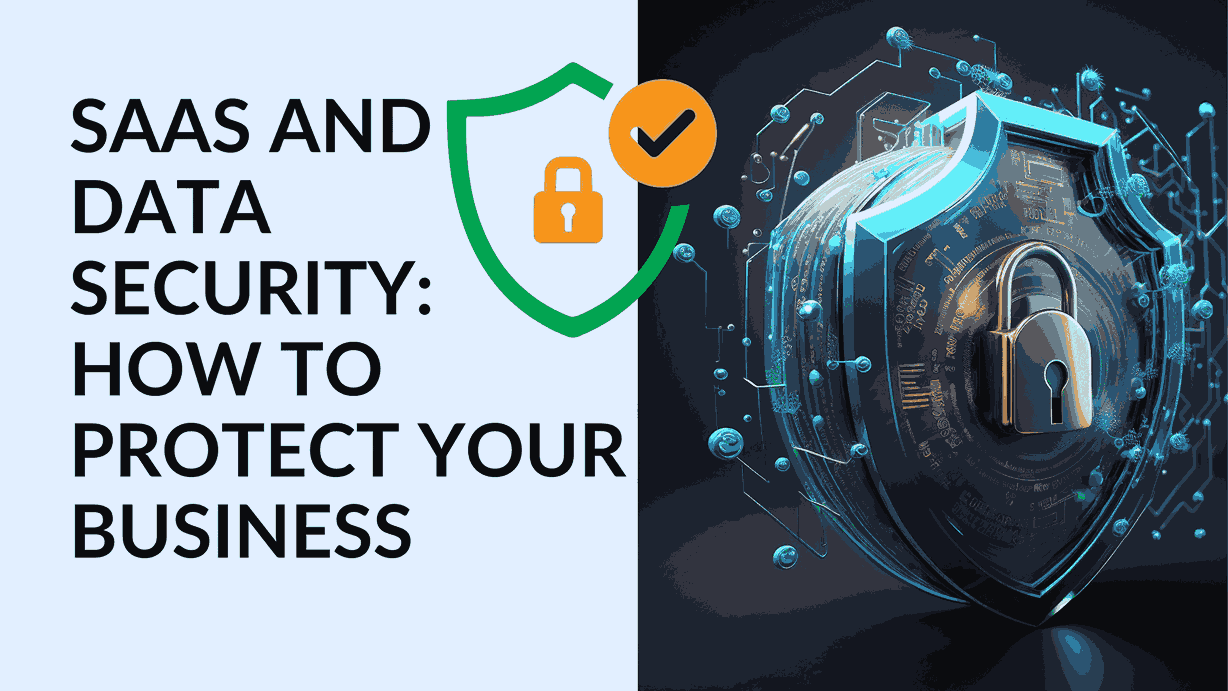SaaS and Data Security: How to Protect Your Business
- AI Image Generators Software AI Writing Assistant Popular Tools AI Tools


SaaS and Data Security: How to Protect Your Business
In today’s SaaS market, security is a paramount concern. Over the past decade, there has been a fundamental shift in how companies conduct business online. However, many customers still grapple with a lack of trust or understanding of these changes. Building credibility as a cloud-based business has become more challenging than ever.
To mitigate the skepticism surrounding nebulous subscription payments, SaaS companies must place a strong emphasis on safeguarding customer data and effectively communicating their security measures to users. Merely acknowledging the concern isn’t sufficient; concrete security measures that customers can comprehend are imperative.
In this article, we’ve compiled essential information and best practices for SaaS security to help you embark on securing your subscription-based company. Let’s delve into the details.
What is SaaS Security?
SaaS security pertains to the privacy and safety of user data within subscription-based software.
Every day, SaaS companies interact with, manipulate, and analyze copious amounts of customer data. Failing to protect this data as a SaaS founder will have a direct and lasting impact on your users’ experience.
To ensure the security of customer data, regulatory bodies have issued security guidelines, including GDPR, EU-US and the Swiss-US Privacy Shield Frameworks. Compliance with these guidelines is mandatory for SaaS companies. This ensures that regardless of the type of data your product accesses, it remains secure and comprehensible to customers, whether you are addressing internal or external concerns.
3 Layers of SaaS Security
To safeguard customer data from external threats effectively, these security measures must be integrated throughout your technology stack. Think of your technology stack as a layer cake, with each layer contributing to the creation of a secure environment.
1. Infrastructure
The foundation of your technology stack, the infrastructure, comprises the software used in the lower levels. This includes providers like AWS, cloud storage, hosting companies, and internal servers. Building a secure SaaS product begins at this foundational layer.
To maintain security at this level, you must thoroughly vet each provider you use and ensure that every connection point between providers is correctly initiated and consistently maintained. Compliance is a shared responsibility between you as the customer and your provider.
2. Network
Network security, a step higher in the server-side stack, ensures secure connections each time someone accesses your product. This layer is particularly vulnerable to malicious attacks. Implement automated processes to identify, log, and send alerts regarding potential security issues.
If you are concerned about network security, consider engaging third-party penetration testing companies and security consultants to facilitate evaluations.
3. Application and Software
This layer traverses both the server-side and client-side segments of your technology stack. SaaS security should focus on this layer, particularly when working with other companies to ensure overall compliance.
Similar to infrastructure, it’s crucial to scrutinize the applications and software you employ to identify potential vulnerabilities. Utilizing a software security and licensing platform, such as Pace AP, can enhance subscription software protection.
SaaS Security Best Practices
When evaluating new tools or introducing new features, consider their implications on SaaS security. Adhering to the following best practices is essential to safeguarding data privacy and security:
1. Encrypt Your Data
Encryption should be a top priority at every layer of your technology stack. Robust encryption ensures that, in the event of a breach, customer data remains protected. In an era marked by high-profile data breaches, such as the Cambridge Analytica incident, customers are increasingly concerned about their data privacy. Communicate your encryption policies to assure customers that their sensitive billing information is consistently safeguarded. Various encryption protocols are available to secure data and prevent it from being stored in plain text.
2. Prioritize Privacy
Privacy and security statements are prerequisites for most compliance and regulatory protocols. However, they serve purposes beyond mere compliance. By establishing a comprehensive privacy policy for your product, you educate both your team and customers on how to handle valuable data. Collaborate with your development and legal teams to define the specific information that should be included in your privacy policy.
3. Educate Your Customers
According to Gartner research, customers are projected to be responsible for 95% of cloud security failures by 2020. When onboarding new customers or rolling out important updates, actively communicate how these changes will affect their security. As more SaaS companies transition to entirely cloud-based infrastructures, it is crucial to ensure that customers understand the implications of this shift. Educate your customers on how to secure their information to minimize potential security issues.
4. Back Up User Data in Multiple Locations
Many businesses are ill-prepared for data breaches, underscoring the significance of effective customer data management. Storing data in multiple locations safeguards against the adverse consequences of a single system failure. While many cloud platforms that SaaS companies rely on offer this functionality as part of their product, diligence in maintaining backups is essential to avert potential catastrophic losses of customer data.
5. Consult a Cybersecurity Firm
Third-party security firms offer valuable industry insights into maintaining platform security. Their testing protocols ensure the ongoing safety of your software, network, and infrastructure. Additionally, these providers can help you devise contingency plans in case of a breach as you build your product.
6. Require Stronger Passwords
Despite understanding the risks, many people continue to use the same password for multiple logins. Mitigate user vulnerability by mandating strong passwords during account creation. Consider implementing authentication protocols and case sensitivity guidelines.
As the subscription economy matures, the focus on security will only intensify. Continuously assess your existing protocols to ensure ongoing compliance as your company expands.
Understanding SaaS Security Ensures Customer Safety
Prioritizing SaaS security is not only about securing your data but also about building trust in your product and fostering an ecosystem in which customers feel confident. As individuals become more knowledgeable about personal security, secure products will naturally become more attractive to buyers.





